Shoot Your Novel!
This year we are going to explore writing technique that is rarely, if ever, discussed or taught at writing workshops or by writing instructors, and that’s utilizing cinematic technique in fiction writing. A few well-known teachers on occasion make mention of the need to show scenes in real time or have characters acting in the present moment, but I’ve yet to come across any who delve into the nuts and bolts of filming a story in segments using camera shots to achieve specific results.
Why Shoot Your Novel?
So that’s what my new year-long course will go deeply into—the whole fifty-two weeks of this year. Novelists can learn so much from screenwriting and film technique, and twenty-first century writers need to have some (if not many) of these tools in their writers’ toolbox. Why? Because we live in a world that is inundated with movies, TV shows, video games. We live in a visual world, a world in which stories are shown, not told, and shown with power and creativity. Readers expect and want the stories they read to evoke visuals, to be immersed in a present-action story they can see. Readers want characters that jump off the page, alive and vibrant, engaged in a plot that they can picture—not full of abstract concepts.
This isn’t to say every scene in every book should read like a movie or should only be high action and void of thoughtful passages or exposition. There are times when some scenes in a novel won’t call for cinematic technique. But I will venture to say that few writers utilize the visual artistry of film technique much, if at all, in their novels, which often leaves their scenes flat and uninteresting.
What this course will do is introduce you to numerous directives or camera shots that screenwriters use when penning a script for television or the big screen. We’re going to go deep into showing—and not just showing but how to show—which is vitally important. Using cinematic technique can supercharge your writing, make it burst with life. I like to say that if you are struggling with your writing and feel your scenes are often stagnant and flat, and you want to strangle your novel, think about shooting it instead!
So let’s jump in and start the New Year with exploring strange new worlds and boldly going where few writers have gone before . . . but first, a bad joke.
Point and Shoot
So, a man walks into a bar, accompanied by a large piece of asphalt. He goes up to the bartender and says, “I’ll have a whiskey.” He nods at his friend and adds, “Oh, and one for the road.”
If I told this joke to you and a group of your friends, I’m not sure you’d laugh as much as I’d hope, but one thing I am sure of—you would each have pictured this playing out in your head, and each would have seen a completely different “movie.” Maybe you pictured this taking place in a Western saloon, with the man dressed in cowboy boots and wearing a Stetson hat. He probably had a Texan drawl, and maybe was chewing tobacco as he spoke. Maybe one of your friends imagined a Yuppie high-end urban bar, with soft leather upholstery and smelling of expensive Cuban cigar smoke.
However you envisioned this briefly described scene, no doubt your friends “saw” something wholly different in their minds. Here’s the point: if you had watched this in a movie on the big screen, you and your friends would have seen the exact same things. You wouldn’t be arguing later whether the piece of asphalt was black or gray or the man was wearing that hat or not. The film itself provided all the details for you, leaving little to your imagination.
Tell It Like You See It
With fiction, though, writers are presented with an entirely different situation. The reader reading your novel will only see the specifics if you detail them. And even if you do, it’s likely she will still envision many of the scene elements different from what you hoped to convey.
That’s not necessarily a bad thing. In fact, leaving out details and allowing the reader to “fill in the blanks” is part of the reader-writer relationship. In a way, a novel becomes much more personal than a movie, a little bit of a “choose your own adventure” quality. Many love novels just for that ability to “put themselves” into the story, whether it be by relating to a protagonist, seeing people we know in the characters presented, or feeling like we are going through the trials and perils presented by the plot.
The challenge and beauty of the artistic palette a writer uses raises numerous questions:
- How much or how little detail do I (or should I) put in my novel in order to help the reader see the story the way I see it? And how much should I leave to the reader’s imagination?
- How can I best write each scene so that I “show” the reader what I want him to see?
- How can I write scenes that will give the emotional impact equivalent to what can be conveyed through a film?
We’ll be going deeper into these questions and exploring the many ways camera technique can “show” instead of tell. Get ready to wear some new hats, for you’re going to learn how to not only write but direct and “film edit” your story for greatest impact.
This week, think about the questions above. Consider the ways you “show” a scene unfold so that it plays out like a movie scene. Do any novels come to mind that you’ve read recently in which the author has painted visually dynamic scenes that you can picture as if watching a movie? Thumb through that novel and find such a scene and take a look at the way the writer used specific details to make the scene easy to picture, playing in your mind like a scene in a movie.

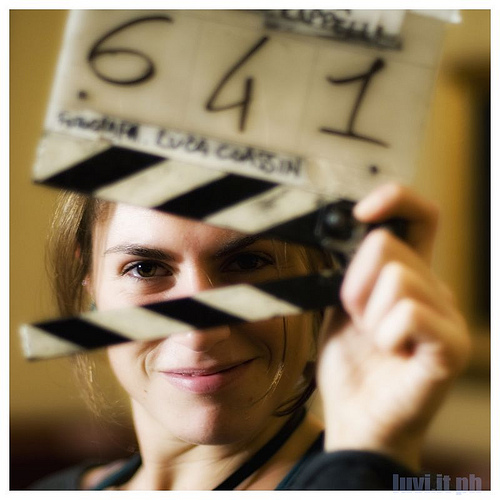
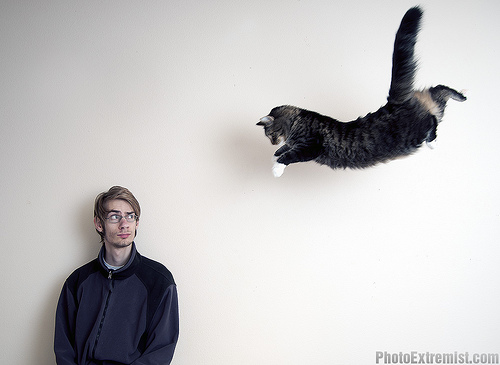
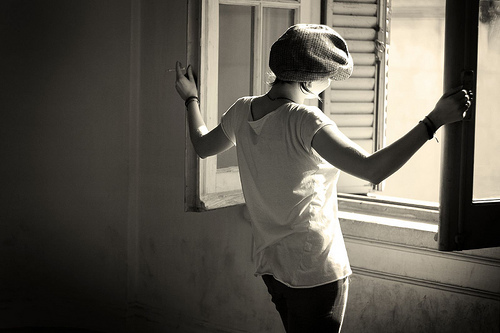
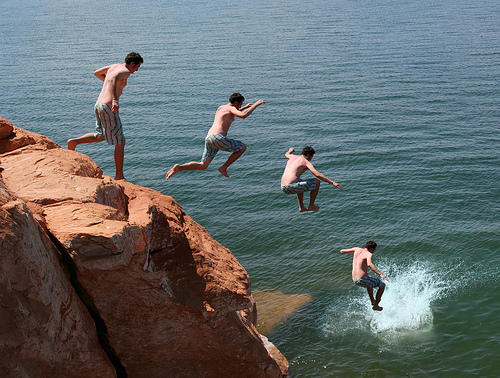


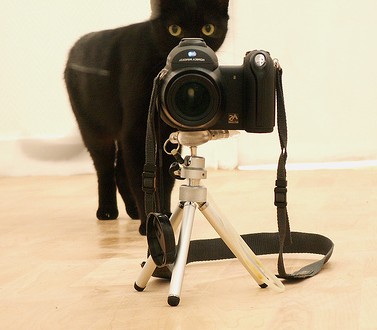




perfect timing! I have a bit of a ‘blank room’ problem that I really want to fix.
I will be following you – this is very ingenious. I have been working on a novel since June, have been in a writing workshop for four months. The leader of the group says to write the novel as a movie. I appreciate you breaking it down into steps week by week. Thank you!
You’re welcome! I’ll be giving lots of examples of the different camera shots and how they’re used in a novel. Glad to have you along. Be sure to share some comments as we go through!
Is this a free course? I can’t see a place to pay??
Of course it’s free! It’s on my blog, just as the year course of Writing the Heart of Your Story was up for free. It will be put in book form and sold later. Thanks!
Interesting – must see how this goes
I’m looking forward to following your series. Thank you!
This is fabulous and as someone else said, ‘perfect timing.’
Thank you.
Wonderful! I absolutely love your blog. If a reader tells me she can see the story unfold like a movie in her head I take it as a compliment.
I love getting your posts in my email and I always read them first. I’m looking forward to this workshop.
Happy New Year!
Great topic, thank you–I’m looking forward to following this! I”m just starting to work on my third novel (which happens to be a Western, so thanks for the aptly themed joke), and this type of cinematic technique will be very helpful.
I think you have an interesting point here, but I don’t think it is necessary for the reader to see a scene the way I see it. In some cases maybe, but on the whole, readers read to exercise their minds, not to be spoon fed every detail.
Exactly, and we’ll be going more into that. That’s what makes reading such a personal and great experience!
I wrote a manuscript then re-wrote the story as a screenplay. Then I re-wrote the story again as a manuscript. Learning how to write a screenplay was highly beneficial. I’m very visual, so screenwriting came naturally to me. When writing a manuscript, I do not go into a lot of detail when it comes to backstory or what a character is feeling. I let dialogue to a lot of the work for me.
Excellent! My novel began its life as a screen treatment. Much of the protagonist’s back story and development is handled through dream sequences and dialogues with apparitions. As I write I still “see and hear” it more than “think” it. I find myself grappling constantly with your three questions. I look forward to your posts!
Sounds fascinating and essential.
I’m new to your blog and thrilled to get a whole year devoted to this topic!
Thanks! You can always go through last year’s course on how to write the heart of your story if you go back to Jan. 1 and read through all the posts in that category. I’ll be putting a comprehensive book out with all the posts and more later this year.
I am so looking forward to this blog posting:)
You are so kind to do this for people. Seriously! So much work must go into this all…you are a very wise lady. May you be Blessed beyond your deepest desires. – I am so chuffed to have this to look forward to learning from, it always makes so much sense. I know I sound smulchy…but it does give one a little faith back in humanity! Thank you.
Thanks so much. I really enjoy doing this, but I never find time to write much fiction!
As an artist who has worked in the film industry for many years, might I also suggest looking into and/or incorporating some of the concepts of Production Design into your course.
The Production Designer is the person responsible for the overall look and feel of a production, ie colour palette, mood etc. Usually with the cinematographer but frequently above them in the food chain. They are to colour what the screenwriter is to the dialogue/text.
Colour is the subliminal aspect to a film that flies under the conscious radar. Sometimes it is overt and other times you don’t register what’s happening, but you will feel it. Consider the emotional impact of colour and how it helps propel the protagonist’s emotional arc/story at each particular sequence or scene.
There is a lot to this idea beyond ‘seeing’ the scene as if through a camera only. I encourage the reading of the following books;
If it’s Purple, Someone’s Gonna Die. The Power of Color in Visual Storytelling by Patti Bellantoni
and
Cinematic Storytelling by Jennifer Van Sijll.
Anyway, fascinating topic and I will be following with great interest!
Thanks
Thanks a lot, Your advice and thoughts are simply a godsend! 🙂
I’m stuck in a part of my novel where I’m still wishing for a good ending. Yes, I too visualize a lot of my scenes, sometimes dream them like a movie and then furiously pen them down on paper. Still learning to type fast nowadays and typing it down.
Thanks a ton and greatly appreciate your efforts.
Best wishes & Regards and hoping the New Year 2013 is wonderful for you too.
How do I take advantage of this opportunity?
Like last year’s whole course, the posts will be up every Wednesday for the entire year in order, so just subscribe and join in the conversations!
Thanks for posting this. I will be following along. I realized a few months back that when I start the 2nd draft of my novel, I’m going to need to add quite a bit more detail. I think this will be helpful to me in figuring out how to do that.
Thanks again.
wow, this is sooo timing now that I am struggling in my writing, I will follow you….
Great food for thought, C.S. I’m an avid reader & often inspired by books I read. I love the whole idea of visual storytelling & how filmmaking plays into that. Looking forward to seeing how this series plays out this year. Nicely done.
Recently I released a post on blog at tronatales.com(shameless plug) where I did a little short story/flash fiction piece, which may eventually be incorporated into larger work. Tentatively will be indie release of first book in series we’ve been building up to for almost two years. Anyway, early in your post you mentioned writing in present tense. That is exactly what I did with this piece, and an earlier post with same character. It can be tricky to make this work, but good exercise. In fact, I liked it so much I’m compelled to try it again. I had in mind to call the chapter-to-be “Through the Eyes of Bradán”, because it was to be literally told and seen through his eyes. After reading this post I know what I must do. I know I was on the right track. I’m going to make sure we all see a lot more (colors included Production Designer Guy) through the eyes of Bradán. Thanks C.S.
This is fantastic :). I look forward to the rest. I read an interesting chapter in Robert Butler’s ‘From where you dream’ on using cinematic techniques including layering of images and trusting that the visualization of the reader will combine them, etc.
Thank you for sharing all this wonderful information. It is greatly appreciate.
Adie Bowers
can we still read your last years’ blog posts on the Heart of the Story? They also sound good!
By the way, thanks – I just found your blog today and it seems really good. A pity all the courses you list are US-based, but that’s a small quibble!
Blog posts always stay up online so you can access them at anytime. I’m working on getting the book published so at some point this year, I hope, it will be out. the book is a compilation of the whole course, with much more added. In the meantime, just start with January 2012 and work your way through in order. You don’t have to be in the US to benefit from them. they aren’t country-specific. Unless you are talking about the workshops I’m hosting (not teaching). I am just the one putting them on in the SF area, so i think you must be referring to those!
This is exciting! I’ve wondered for a long time if I could write something that visual and engaging. I’m very eager follow this years blog as I get into writing a fantasy story.
Thanks, and I hope you will learn some great technique! I’ll be compiling it into a book after the year is over. But during the year you’ll get lots of great examples on how to use cinematic technique.